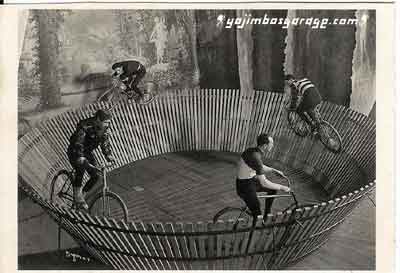I don't normally put race recaps on this site.
I don't do it for a variety of reasons. One reason is that it's very hard to sound anywhere near modest if you're spouting off about how well you did, how great your legs felt, and how you dominated the sprint finish.
Another reason is that if you're reporting that you didn't do so hot and that you abandoned the race for the umpteenth time this year, you inevitably sound like a cry-baby/sissy/ninny. And who wants to read about someone's personal pity party? Not me.
And not many people enjoy reading race reports. I have friends who read this blog who specifically ask me to avoid writing so much about cycling.
Plus,
Superrookie's better half (easy to believe if you know him) wrote
the best race report ever about a month ago. So writing a better race report is an exercise in futility.
So, after saying all of that...I'm going to bypass all of those reasons for today to share yesterday's race report.
I'll try to keep it short. But it won't happen.
Yesterday, Superrookie of Team xXx/Athletico, Sexy Adam of Silver Cycling/Hollywood Cycles and I traveled to the bustling village of Marty, MN (pop. 17) for the 1st Annual Gluek Road Race taking place as part of Marty Days.
The three of us competed in the Category 3/4 race, scheduled for 48 miles -- 4 laps of a 12 mile circuit.
Conditions were a beautiful 80 degrees and sunny for the 1:05 PM - CST race time. 36 riders started the race.
The race got underway without event and continued that way for the bulk of the first three laps. There were a couple of half-hearted breakaway attempts, including one of 3-4 riders that lasted about half of a lap. There was also a significant climb on the backside of the course that really tested riders.
Since Tuffy doesn't climb hills very well due to his ever-diminishing though still-ample weight, I was practicing what
Smithers calls "the drift" -- getting to the front of the pack for the start of the climb to insure that I was still in contact with the back of the pack by the end of the climb.
"The drift" worked like a charm the first two laps.
Then, on the third lap, I really struggled up that hill. I had to put out a much larger effort than I wanted to in order to get to the top, and about 50m from the summit my legs "popped" -- filling full of lactic acid and feeling like they weighed 300 pounds each.
Luckily, my still-ample weight allowed me to descend back into the pack (with some drafting help from The Little Guy) following the climb. But I wasn't feeling it anymore.
My legs were still really bad at the start of the fourth and final lap when I made a deal with myself: give it everything I had on the last climb -- if I got dropped, I got dropped, but at least I would've left it all on the table.
When we got to the climb for the final time, I got as far to the front as I could, sitting maybe 10th wheel at the start of the climb. I got out of the saddle early, but then, like something out of some 1980s movie starring Kevin Bacon or Matt Dillon, my legs came around mid-climb. I sat back down and easily followed Superrookie and company up the hill. When we reached the summit, I felt better than I had at any point of the past two laps.
I'm convinced that
Charly Gaul pushed me up that hill.
Regardless, I got in the middle of the pack at the bottom of the hill. There were maybe five miles left.
The next 4 1/2 miles were spent with people jockeying for position, with the sprinters moving from the "sprinter's lounge" near the back of the pack towards the front and with non-sprinters recognizing their fate and sliding towards the back of the peloton.
It was around this time with Superrookie told everyone in the peloton that he would give them $15 to lead him out for a sprint finish. He got no takers.
Going into the final righthand turn, I was originally on the inside of the road. Then, about 100m before the turn, someone in front of me made a move for it. It opened a nice little space for me and I just followed him. We moved to the left side of the road and prepared for the righthand turn.
I went into the turn in third position. There were maybe 100 meters to go.
I came out of the turn, stood up, and stomped on the pedals as hard as I could. I was slightly over-geared, but I still turned a decent sprint and crossed the line in 5th.
When the final results were posted, I had moved up to 2nd. It seems that via some over-aggressive riding and disregard for race rules that three riders were disqualified for ignoring the yellow-line rule. Those riders had finished 2nd, 3rd, and 4th. One of them had, according to on-lookers, been so brazen as to actually cross the finish line on the wrong side of the road.
So, it's not a "true" 2nd place, but I'll take it. Because I followed the rules...and rode the very best race that I could have.
The worst part? It's already history.
 [photo caption] Cat 6 legend T3 awaits the start of his Category 4/5 race. (photo courtesy of Smithers)
[photo caption] Cat 6 legend T3 awaits the start of his Category 4/5 race. (photo courtesy of Smithers)


















